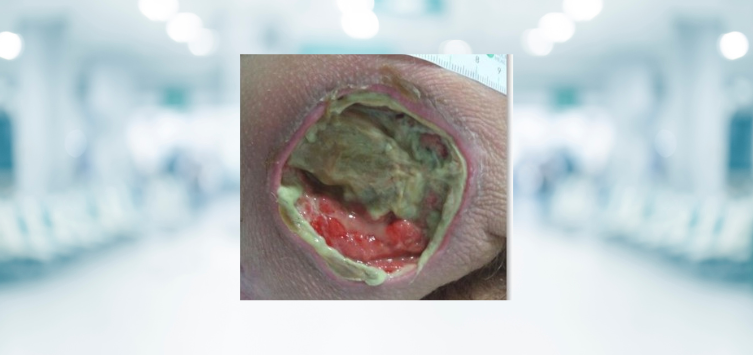


By Nancy Morgan, RN, BSN, MBA, WOCN
Each month Nancy Morgan Wound Care brings you a tool you can apply in your daily practice
Support Resources:
Infographics: Wound Edges
As full-thickness wounds heal, they begin to fill in from the bottom upward with granulation tissue. At the same time, wound edges contract and pull together, with movement of epithelial tissue toward the center of the wound (contraction). These epithelial cells, arising from either the wound margins or residual dermal epithelial appendages within the wound bed, begin to migrate across the wound bed in a train like fashion across the wound bed. Horizontal movement stops when cells meet the edge. The ideal wound edge is attached to and flush with the wound bed, moist and open with the epithelial rim thin, and pale pink to translucent.
In many chronic wounds, a problem with slow or absent epithelial edge advancement is caused by a clinical condition known as Epibole. Epibole refers to rolled or curled-under closed wound edges that may be dry, callused, or hyperkeratotic. Epibole tends to be lighter in color than surrounding tissue, have a raised and rounded appearance, and may feel hard, rigid, and indurated.
Epibole results when the upper epidermal cells roll down over the lower epidermal cells and migrate down the sides of the wound instead of across. Edges that roll over ultimately cease migration secondary to contact inhibition once epithelial cells of the leading edge come in contact with other epithelial cells.
In other words, the body thinks the wound is healed and epithelial migration across the top of the wound ceases. There are many possible reasons why the epidermal margin fails to migrate, including hypoxia, infection, desiccation, dressing trauma, overpacking the wound bed, unhealthy wound bed, inability to produce the basement membrane that the epithelial cells adhere to, or cellular senescence.
Treatment for Epibole involves reinjuring the edges and opening up the closed tissue, which renews the healing process.
Options include conservative or surgical sharp debridement, treatment with silver nitrate, and mechanical debridement by scrubbing the wound edges with monofilament fiber dressings or gauze.
Selected References
Ermer-Seltun J, Rolstad BS. General principles of topical therapy. (2016). In Doughty D, McNichol L, eds. WOCN® Core Curriculum: Wound Management. Philadelphia, PA: Wolters Kluwer; 107-30.
Smith, Keisha, MA, CWCMS. Wound Care and Epibole: It’s All About the Edge. (2017, May 18). Retrieved from https://blog.wcei.net/wound-care-and-epibole-its-all-about-the-edge
Nancy Morgan RN, BSN, MBA, WOCN is an experienced clinician, successful business leader, and accomplished nurse educator in the field of wound management. She is the co-founder of the Wound Care Education Institute, (WCEI®), Wild on Wounds Productions; and, most recently established Nancy Morgan Wound Care offering innovative, educational resources including seminars, webinars, social media and wound care marketing tools to assist and support wound care clinicians at the bedside. Nancy is one of the most distinguished wound care educators, delivering nearly 1200 lectures, conference keynote addresses, seminars, webinars, and bedside consultations during her career.
Information is courtesy of Nancy Morgan Wound Care, copyright 2023
DISCLAIMER: All clinical information and recommendations, text and graphics, in this blog are intended to assist with determining appropriate wound therapy for patients. It is not intended to be a substitute nor constitute providing medical care or advice, diagnosis, or treatment. Responsibility for final decisions and actions related to care of specific patients shall remain the obligation of the institution, its staff, and the patients’ attending physicians. Individuals should always contact their healthcare providers for medical or emergency-related care.